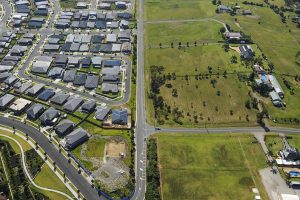
An extra one million people will call Greater Western Sydney home by 2036.
Half of them will be in the north-south corridor between Campbelltown and Hawkesbury.
But how will all those people get to work or leisure activities such as sporting events: public transport or private car?
What is needed to address this issue is an integrated rail and road plan, says one peak western Sydney group.
“It is a question of whether you want these extra people on public transport heading to colleges, sporting events, employment centres or recreational activities, or whether you want to cram them onto roads,’’ says Stephen Bali, the president of Western Sydney Regional Organisation of Councils (WSROC).
“Western Sydney Airport should not be the sole driver for new rail connections,’’ he said.
“If we wait until after the airport opens there will already be half a million extra people living along the north-south corridor.
[social_quote duplicate=”no” align=”default”]“Rail has the power to significantly shape a city’s development and shouldn’t be tacked on as an afterthought,” he said.[/social_quote]
WSROC says that if a rail station was built every two kilometres along the 65km corridor between Hawkesbury and Campbelltown and residential density around those 32 stations was increased, more than 500,000 people would live within walking distance of the rail line.
Just 23 per cent of Western Sydney residents currently live within walking distance of a rail station.
Investment in the town centres surrounding these stations could easily match the employment projections of Western Sydney Airport.
It would also transform the way the region operates.
“We would increase walkability in a region with shocking health statistics, and improve quality of life through shorter, more affordable commutes,” Bali said.
“Along the way, we would improve access to health care, education and employment for a number of disadvantaged communities.’’

Sue Gay
Nea Makowski